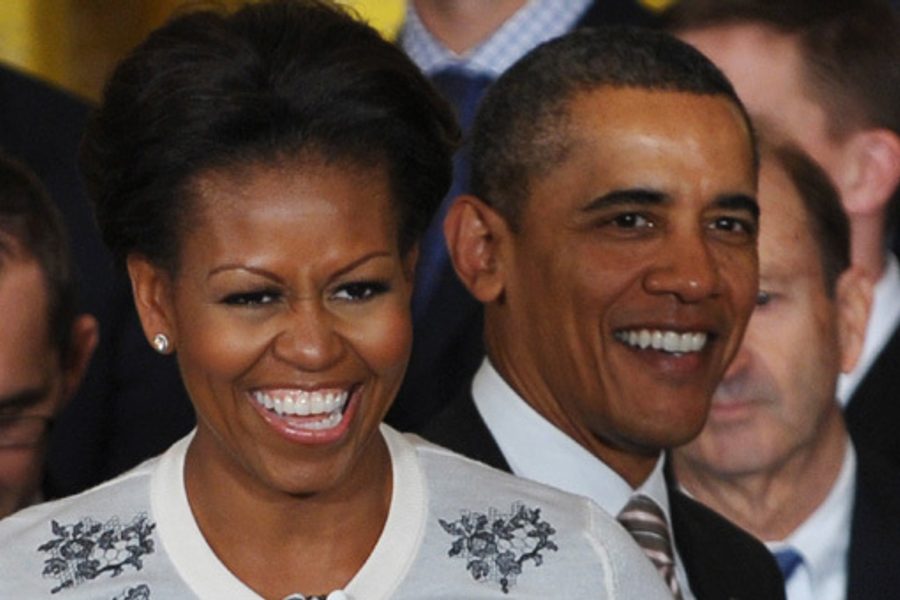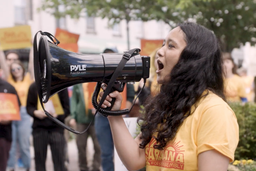Curing the First Lady Syndrome
A new book on the Obamas’ marriage just might bring Michelle out of her shell.
Jude Ellison Sady Doyle

Jodi Kantor’s new book, The Obamas, is nothing if not ambitious. It aims to be an intimate, complex portrait of a very public marriage, showing the relationship dynamics between two successful, brilliant people, one of whom happens to be president. Kantor was granted access to the president and First Lady’s advisors and friends, though not the first couple themselves, and given permission to create an account of how they have lived and worked together since moving into the White House.
The resulting book is, indeed, complex. It refuses to make a plaster saint out of either Barack or Michelle Obama, portraying the president as brilliant and principled, yet overly confident in the power of principle and brilliance alone to triumph over obstacles, and the First Lady as skeptical of the political process and displeased with many of the compromises it required, yet ultimately better at people-pleasing and defending the administration’s choices than her husband.
While the Kantor’s account is indeed complex, its claims to intimacy are problematic. Kantor often crosses the line between saying what Michelle Obama was perceived to think and claiming to know her thoughts, some of which are unflattering: “Michelle felt her husband was self-absorbed and unrealistic,” one passage asserts. And in one unintentionally funny sentence: “The first lady was sensitive about the use of her image and prone to feeling exploited” – wait for it – “especially with bookstores and magazine racks filling with attempts to cash in on her popularity.” The overall effect is that the book’s takeaway, for many, is essentially: Look! They’re fighting! And Michelle is mean! And Michelle herself has responded.
“I guess it’s more interesting to imagine this conflicted situation here, and a strong woman,” she told Gayle King in a January 11 interview, putting a mocking emphasis on strong woman. “But that’s been an image that people have tried to paint of me since the day Barack announced. That I’m some angry black woman.”
Her slight pause between “angry” and “black woman” came across; the impression was of someone hesitating to spell the situation out, before just going ahead and spelling. “Michelle Obama finally went there,” read the lede of an article in The Hill a few days later.
Rebecca Traister, author of Big Girls Don’t Cry: The Election that Changed Everything for American Women, said she was “absolutely surprised and happy to hear her address this kind of stereotyping.” And yet, she said, “I was dismayed … to hear the First Lady address all this stuff with regard to the Kantor book, which I actually think is an effort to treat her with the respect that she deserves, and which I don’t think she’s gotten from the rest of the media.”
Traister pointed to several instances in which Obama had been portrayed cruelly as an angry, emasculating, controlling woman – a Sapphire stereotype right out of the ugliest parts of the white American imagination. There was, for instance, the choice of the National Review to depict her on its cover as “Mrs. Grievance,” in a bilious yellow light and threatening pose. Traister also mentioned Christopher Hitchens’ attempt to link her senior thesis to the ideologies of Louis Farrakhan on the strength of a footnote, and to suggest that her proximity to Obama might be a reason not to elect him: “I have the distinct feeling that the Obama campaign can’t go on much longer without an answer to the question: ‘Are we getting two for one?’”
Washington Post columnist and former Jezebel.com editor Anna Holmes mentioned a Buzzfeed list of reactions to the First Lady’s joining Twitter, which gave some sense of the bile floating around the Internet: “Why are you so angry? You must have a sad life,” one user opined. “I would say the next most hateful woman in America is Michelle Obama. She just about hates everyone and everything,” said another. Another person was more succinct: “[The] angry cow is on Twitter.”
If Michelle Obama does not get angry from time to time, we should worry. But the surprise around the First Lady’s decision to publicly defend herself has as much to do with her earlier approach to these charges as it does with anything else.
“She has removed herself from that aspect of the conversation, or she’s just changed the conversation completely, to things that are much more banal,” Holmes said. Although Holmes doesn’t deny the legitimacy of Obama’s chosen projects – fitness, proper nutrition, etc. – she also said that “it’s been frustrating that Michelle Obama has kind of removed herself from doing her thing, or doing anything that could get her pushback.”
Traister has called this “the momification of Michelle Obama.” In order to avoid being flattened into a racist caricature and used as a weapon against her husband, the First Lady has seemingly had to play down the very qualities that make her admirable: her intellect, her drive and her ability to speak directly and compellingly on crucial subjects such as war. This has led, Traister says, to her being spoken of “as a sister, a mother, a daughter, a wife, and absolutely never as her own person.” Even her legitimate influence with her husband – they first met when she was assigned to be his mentor at a law firm in 1989 – has been given soft focus.
But by addressing the problem so directly, a large part of her silence may be breaking. As Holmes reminded me, many people like Michelle Obama immensely, even if they don’t always like her husband’s decisions.
“Maybe her commentary on this book is just the beginning of a higher profile for her, at least for this year,” Holmes noted. “It is interesting that she’s joined Twitter the same week the book came out.”

I hope you found this article important. Before you leave, I want to ask you to consider supporting our work with a donation. In These Times needs readers like you to help sustain our mission. We don’t depend on—or want—corporate advertising or deep-pocketed billionaires to fund our journalism. We’re supported by you, the reader, so we can focus on covering the issues that matter most to the progressive movement without fear or compromise.
Our work isn’t hidden behind a paywall because of people like you who support our journalism. We want to keep it that way. If you value the work we do and the movements we cover, please consider donating to In These Times.
Jude Ellison Sady Doyle is an In These Times contributing writer. They are the author of Trainwreck: The Women We Love to Hate, Mock, and Fear… and Why (Melville House, 2016) and was the founder of the blog Tiger Beatdown. You can follow them on Twitter at @sadydoyle.







